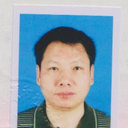Bioactive natural constituents from food sources-potential use in hypertension prevention and treatment.
Maneno muhimu
Kikemikali
Prevention and management of hypertension are the major public health challenges worldwide. Uncontrolled high blood pressure may lead to a shortened life expectancy and a higher morbidity due to a high risk of cardiovascular complications such as coronary heart disease (which leads to heart attack) and stroke, congestive heart failure, heart rhythm irregularities, and kidney failure etc. In recent years, it has been recognized that many dietary constituents may contribute to human cardiovascular health. There has been an increased focus on identifying these natural components of foods, describing their physiological activities and mechanisms of actions. Grain, vegetables, fruits, milk, cheese, meat, chicken, egg, fish, soybean, tea, wine, mushrooms, and lactic acid bacteria are various food sources with potential antihypertensive effects. Their main bioactive constituents include angiotensin I-converting enzyme (ACE) inhibitory peptides, vitamins C and E, flavonoids, flavanols, cathecins, anthocyanins, phenolic acids, polyphenols, tannins, resveratrol, polysaccharides, fiber, saponin, sterols, as well as K, Ca, and P. They may reduce blood pressure by different mechanisms, such as ACE inhibition effect, antioxidant, vasodilatory, opiate-like, Ca(2+) channel blocking, and chymase inhibitory activities. These functional foods may provide new therapeutic applications for hypertension prevention and treatment, and contribute to a healthy cardiovascular population. The present review summarizes the antihypertensive food sources and their bioactive constituents, as well as physiological mechanisms of dietary products, especially focusing on ACE inhibitory activity.


